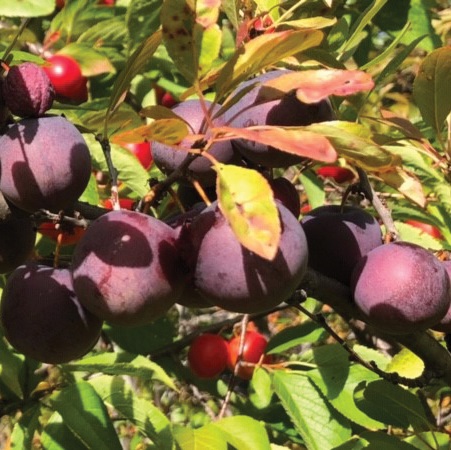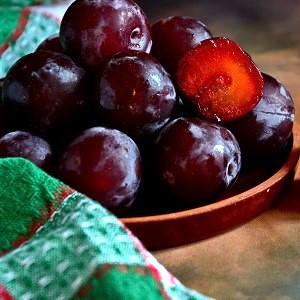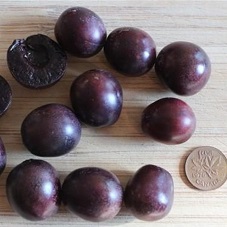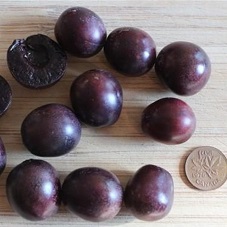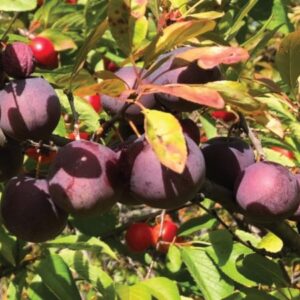Chum : CONVOY Semi-Dwarf (Sapalta Seedling) (Orchard Grade)
$42.95
An 'orchard grade' is a tree that may be somewhat shorter, slightly crooked, or a bit scratched, or for some other reason is not a perfect front lawn specimen. These trees will work just as well in an orchard as a first or number one would, since they still produce the very same fruit.
Introduced in 1941 by Boughen Nurseries, one of the Prairie's most venerable nurseries for over 100 years, in the uncompromising climate of Valley River, MB. Convoy is a cross of Canada plum (Prunus nigra) and sandcherry (Prunus pumila var. besseyi). The round 3cm (1¼") fruit is bright, fire-engine red with very juicy, clingstone flesh. Mild, sweet flavour makes Convoy one of the better fresh eating chums. Pies, processing and canning are other practical possibilities. The growth pattern shows more plum influence than most chums with upright, almost columnar type growth, rather than low and spreading. Mature height is from 2.5-3.5m (8-11')
NEEDS A POLLENIZER | ZONE 3 | HARVEST : LATE AUG
Rootstocks
G41 Dwarf
G935 Small Semi-Dwarf
G969 Small Semi-Dwarf
G30 Semi-Dwarf
G890 Semi-Dwarf
Pollenator definitions
NEEDS A POLLENIZER ̶ means another tree of the same type or kind but a different variety must be blooming nearby at the same time.
EXAMPLE A Liberty apple and a Wealthy apple can cross-pollinate. Two trees of the same variety ie: ̶ 2 Wealthy apples, cannot cross pollinate because they are genetically identical.
Other trees are marked as SEMI-FERTILE. These will set fruit without a second tree. However they will often bear more, and sometimes larger fruit if another variety of the same kind of tree is nearby.
You can select 2 different trees of the same kind marked as NEEDS A POLLENIZER or plant one of those along with one SELF-FERTILE or one SEMI-FERTILE. Also consider ripening times ̶ a Goldrush apple might not start blooming before a Pristine is finished.

